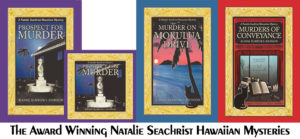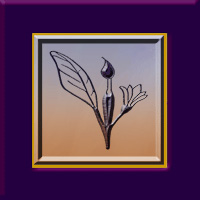
Cost-Effective Promotion to Advance Your Brand!
The year 2020 came, threatened to conquer the world, and departed. No one I know was left unaffected personally, or professionally. Fortunately, there are signs that conditions in American politics and economics are improving. Sadly, global health is not. For the time being, quarantine from the pandemic remains a necessity, at least for those of us who are older. And even if we venture forth, safety precautions must be observed that preclude much personal interaction. The following blog addresses promotion for authors, but the principles are applicable for marketing many products and services.
REFINING OUR BRANDS
As we move forward in this year, re-examining our status and brand as creative professionals is vital. One of my challenges as an author centers on labelling the genre in which I work. My informative books embrace elements of classic literary fiction. And although the genre of “mysteries” obviously defines the core of my Natalie Seachrist Hawaiian Mysteries, the issue of selecting an appropriate sub-genre is difficult. Some, such as “police procedural” can be eliminated immediately, as my protagonist is a semi-retired journalist. Since my books do not feature profanity, sex, or overt violence, the term “cozy” is generally applied to my books.
Unfortunately, that sub-genre often connotes a simplistic tale with little substance. So, what sub-genre incorporates the protagonist’s breadth of visions, the emphasis on history, detailed multi-culturalism, depth in character relationships, and passages of stylistic prose? Suspense? Paranormal? Historical fiction? Romance? At this point, the general category of “mysteries” remains most appropriate. It’s nice to observe that in Hawai`i, my work is placed in the Hawaiiana section of libraries and bookstores.
MOVING YOUR BRAND FORWARD
Once you have examined and possibly refined the elements of your brand, it is time to determine how you can best promote it in the current and as well as prospective marketplace. You might begin by asking how you normally present yourself in marketing and promotional projects. Do you strongly feature yourself? Perhaps, if you are an author, your protagonist the key element. Like me, the environment in which your stories take place may be dominant.

EXAMINING OUR OPPORTUNITIES
When cost is not an issue, there are myriad advertising options. I’m lucky that much of the promotion of my books is taken care of by my publisher. However, in this tight literary market, I am expected to undertake many aspects of promotion. With three titles in the NS series, I sometimes team with Geoff Habiger of Artemesia Publishing in marketing projects.
As sales and promotion via brick-and-mortar stores and events have been reduced by the pandemic, opportunities afforded by the Internet are increasingly impactful! As I observed in my last blog in the summer of 2020, the success of this type of marketing can be amplified by entrepreneurs of every type. The primary challenge is selecting among the prospects that are appropriate for maximizing outreach to our target audience. The following are some of the cost-effective avenues from which I choose.
~ Book Reviews. Whenever a new book is published, I [or my publisher] submit it for reviews. Traditionally, some of the venues for doing so have more stature than others…either because of the longevity of their existence, their current popularity. For nearly 90 years, Kirkus Reviews have been the hallmark of respected review of published material. While the cost of their services may be considerable, they have remained the most respected in their field. In addition to providing reviews, they offer opportunities to promote publications highlighting text from their reviews of the material. The above ad will soon appear in the Kirkus eMail Newsletter which is directed at a substantial list of subscription recipients.
~ Professional Associations. There are many local, regional, national, and international groups that authors and other creative professionals may choose to join. Some are more appropriate due to the genre in which one works. Which are best for you? Those that are prestigious or least expensive? What opportunities do they provide to their members: educational programming to expand their members’ knowledge and proficiency; invitations for the public to examine member websites and social media pages; the ability for members to directly post links to their websites, social media, podcasts, or other On-line presence? Another important consideration is whether an organization participates in events to meet current and potential clientele?
~ Contests and Awards. National, regional, and state organizations abound with the chance to enter author and artist creations for evaluation and award. Unfortunately, I do not write short stories, which are often the basis for writers’ contests. I have learned that there are opportunities for submitting initial pages of my books. Not long ago, my publisher and I entered two of my books in a book-to-film contest. This meant that we were able to split the cost which benefitted both of us. While we did not win, we did receive useful evaluations. What I learned from the experience is that my work is unlikely to appear on the big screen, it may be appropriate for small screen stand-alone or serial presentation.
~ Websites for Authors and Readers. There are many websites in which both readers and authors can participate…free but often requiring becoming a member. In addition to providing space for book covers, descriptions, reviews, and links to facilitate sales, some websites [both public and via membership] invite authors to submit articles and blogs for the benefit of both authors and readers. I periodically offer commentary to Hometown Reads [Coloration for Authors and Public Speaking to Enhance Branding] and Authors Den [where you’ll find articles and poetry in addition to information on my books]. Such sites sometimes offer opportunities to sell books at a discounted rate during special promotions. They may also provide low-cost advertising events.
~ Book and Art Shows and Fairs. This may be the most expensive form of promotion in today’s suggestions…but far less than long-term advertising. A quick check on the Internet will yield lists of book fairs across the country…and the globe. Local and regional websites of media outlets offer event calendars for book and art shows. Depending on where you live, such events may have been suspended for the time being, but virtual events may still be open for your participation.
Wishing you the best in your creative endeavors,
Jeanne Burrows-Johnson, author, consultant, and motivational speaker
For further discussion of branding and marketing see:
Rainbows of Color, May 2015
Winning Logos & Slogans, October 2015
Harmonizing Branding Elements, August 2016
Book Promotion and Evolving Art, January 2017
To learn more about the award-winning Natalie Seachrist Hawaiian Mysteries, including Murders of Conveyance [Winner, Fiction Adventure-Drama, 2019 New Mexico-Arizona Book Awards] and other projects, please drop in at my author’s website JeanneBurrows-Johnson.com. You’ll even find Island Recipes that might inspire your culinary creativity.
For more ideas to strengthen your Wordpower© and branding, please visit: Imaginings Wordpower and Design Consultation.
Follow Me:
Amazon, Arizona Authors Association, Apple Books
Audible, Authors Den, Barnes and Noble, Blogarama, Book Bub
Cozy Mysteries-Unlimited, Facebook, Good Reads, Hometown Reads
Book sellers may contact book distributors such as:
Baker & Taylor, Follett, IPG, Ingram, Mackin, Midpoint, TitleWave

